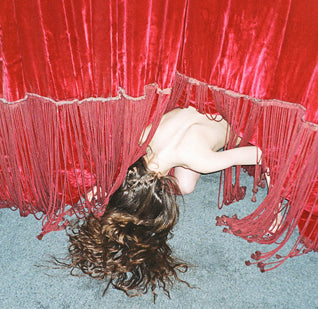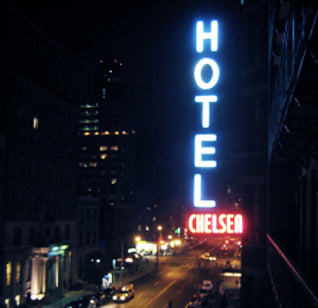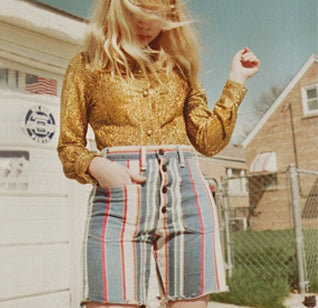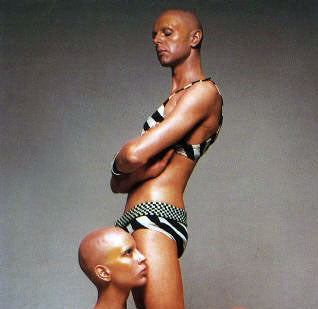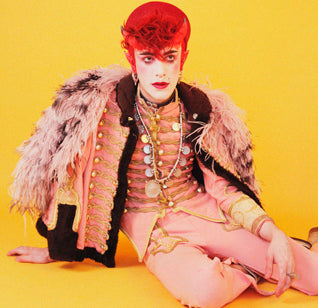FASHION'S BOTTOM LINE
Juergen Teller proves not all nudity is pornographic
by KOD Staff
Pornography is everywhere. From music videos and bestselling books to advertising, pornification is infiltrating every part of our culture. The media reacts with panic and a witch-hunt begins for images signalling moral decline. But nudity can be used for a range of reasons and the work of Juergen Teller reveals it is not always derogatory.
i-D Magazine recently released the think-piece: “When did Fashion become Porn?” Similar scare headlines have become a way for journalists to expand their readerships, whilst deriding handfuls of photographers as pornographers. The Guardian’s Hadley Freeman mistakes visual similarities for moral affinities in her article, ‘Fashion’s Shameful Secret’. Expanding her criticism of playboy provocateur Terry Richardson to apply to any photographer who dare use nudity in their work, she absentmindedly groups Juergen Teller alongside American Apparel adverts.

Juergen Teller, 'Louis XV', 2004
To call all images crass is to misunderstand nudity and pornography within the fashion industry. The definition of porn is rooted in titillation and sexual arousal; to feel aroused by many of Teller’s photographs is not only difficult but downright inappropriate. Reclining on a piano, legs up, ass cheeks spread, there is nothing appetizing about Teller’s ‘Louis XV’ Marc Jacob’s shoot with Charlotte Rampling. Here, grotesque nudity makes the shoot comical, yet disturbing.
From an artist who called his 2013 ICA show ‘Woo’ after Will Ferrell’s character in ‘Eastbound and Down’, to consider many of his images as pornographic is to take them all too seriously. He teases the viewer with visual puns. The 2008 image ‘Octopussy’, is an absurd joke on porn’s visual depictions of women; an octopus on a dishevelled bed, tentacles open, acting as a bizarre representation of a vagina. Teller dares his audience to see the genital similarities while making it clear that it’s all a product of the viewer's own dirty mind.
'Octopussy’ is an absurd joke on porn’s visual depictions of women; an octopus acting as a bizarre representation of a vagina.
Most contentious though are Teller’s images of nude women –as always, depictions of naked males fail to qualify as porn in popular culture. Female genitalia, as displayed by model Kristen McMenamy in Teller’s 2005 Marc Jacobs shoot, is frequently labelled pornographic and exploitative. But Teller’s images use nudity to comment on the fashion industry’s dehumanization of its models. He reminds us that models are not mannequins – underneath the gold dress is a real woman.
An attractive woman does not instantly create porn by unveiling her genitals. These images, consumed mostly by the female audience of fashion magazines, are not for arousal: here a vagina is shocking and graphic, but not titillating. Thanks to its shock factor, nudity has always had the potential to make a statement.

Juergen Teller, 'Kristen Lifting Skirt', 2005
Teller also confronts the relationship between nudity and sex through the women he shoots. His 2009 series, of Vivienne Westwood reclining nude, strikes that difficult balance between the female form and the iconic designer. Shot in a classical style, at home after a family Sunday lunch, Westwood looks relaxed being photographed by her friend – her nudity allowing an intimacy with the viewer that high fashion can inhibit. Teller believes, “Nudity is the most natural form of how you are”.
There is nothing threatening about Teller’s camera. Cindy Sherman’s 1981 ‘Centerfolds’ Series is one of the best known visual critiques of the male gaze – her characters lie vulnerable on the floor in pornographic poses. Teller uses similar positions in his work but his camera seems removed and disinterested in the female subject. His trademark off-centre framing directs the viewer’s eye away from the model; the woman is not the focus.

Juergen Teller, Vivienne Westwood, 2011
However smutty photography is certainly alive in fashion photography. In an industry where Terry Richardson can strip naked, put young female models into compromising poses and touch them whilst shooting, there are discussions that must be had about model vulnerability. Fashion takes the idea that “sex sells” to extremes yet we cannot judge all photographers by Richardson’s track record.
Images must be put into context. An artist’s model is not a stripper and American Apparel adverts have a different appeal to the work of Juergen Teller. Moral panic may sell newspapers and magazines but it does nothing to fix representation problems by blanket labelling all images of women. Not all nudity is sexual.












